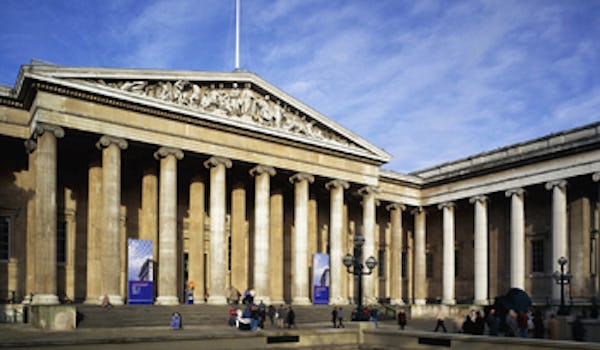
This event has been and gone.
If we know of a trusted online shop with tickets available, we will always provide a link to buy from them
Add to your event list
Ming: 50 Years That Changed China
Extraordinarily beautiful and rare loans tell the story of a critical period in Chinese history (1400 – 1450) when China became a global superpower
This was a Golden Age when China produced some of the most beautiful objects and paintings ever made
Loans will be coming from 10 Chinese institutions and 21 international lenders
Features new research and discoveries
First time an exhibition of this kind has been attempted
To complement the exhibition the British Museum will lend an iconic blue-and-white Ming vase to four partner museums across the UK in 2014, supported by BP.
In September 2014 the British Museum will stage a major exhibition in the new Sainsbury Exhibitions Gallery on a golden age in China’s history. The exhibition will explore the years 1400 – 1450, a pivotal 50 year period that transformed China during the rule of the Ming dynasty. In this period the capital is established in Beijing and the borders of China are fixed as they are today. Bureaucrats replace military leaders in the hierarchy of power, the emperor’s role changes from autocrat to icon, and the decision is taken to centralise, rather than devolve, power. The exhibition will include rare loans of some of the finest objects ever made in China, shedding light on this important part of world history that is little known in Europe. China’s internal transformation and connections with the rest of the world led to a flourishing of creativity from what was, at the time, the only global superpower.
This period for China was a time of extraordinary engagement with the world and of fascinating cultural diversity. The explorer Zheng He pioneered China’s maritime history, sending treasure ships to South East Asia, the Middle East, and Africa. China enjoyed a period of unprecedented global contacts from Kyoto to Mogadishu, through trade and diplomacy evidenced through gifts of gold, silver, paintings, porcelains, weapons, costume and furniture. This is the first exhibition to explore the great social and cultural changes in China that established Beijing as a capital city and the building of the Forbidden City - still the national emblem on coins and military uniforms today.
As well as the imperial courts, the exhibition will focus on finds from three regional princely tombs: in Sichuan, Shandong and Hubei covering East, Southwest and Central China. Four emperors ruled China in this period. The exhibition will include the sword of the Yongle Emperor, “the Warrior”; the handwriting of the Hongxi emperor, “the bureaucrat”; the paintings of the Xuande emperor, “the aesthete”; and the portraits of the regents who ruled while the Zhengtong emperor was a boy. There will also be costumes of the princes, their gold and jewellery, and furniture. The exhibition covers court life, the military, culture, beliefs, trade and diplomacy.
The exhibition covers a period when there was unprecedented contact with the world beyond the Ming Empire, through embassies, an assertive military policy, and court-sponsored maritime expeditions. Early Ming imperial courts enjoyed an unparalleled range of contacts with other Asian rulers: the Timurids in Iran and Central Asia; the Ashikaga in Japan and Joseon Korea. Contacts extended to Bengal, Sri Lanka, Africa, and even to Mecca at the heart of the Islamic world.
The exhibition aims to replace older histories of China that over-emphasise contact with Europe after 1500 by highlighting complex and longer-lasting intra-Asian connections that played a key role in the formation of the Chinese state, society and culture. At the same time, the exhibition will explore the diversity within the Ming Empire itself, and the idea that it is multiple courts, and not one single, monolithic, imperial court, that are important in this period. Here, the recent spectacular gains of archaeology, in revealing the culture of the regional princely courts of the early Ming, enable art and material culture to significantly alter our view of the period.

The British Museum
- Disabled Booking:
- 020 7323 8299
See all events at The British Museum
The British Museum
- Disabled Booking:
- 020 7323 8299
See all events at The British Museum